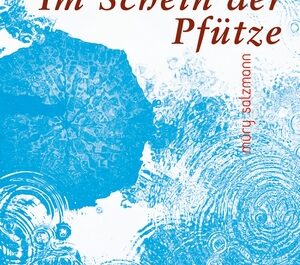Vengeance of the Phoenix Sisters
三鳳 震 武林
New Regal Film Company
Executive Producer: Jintana Ferreira (蔣杰), Liu Bowen (劉伯樊)
Producer: You Lu (游爐), Zhan Xifan (詹錫藩)
Director: Chen Hongmin (陳洪民)
Screenplay: Zhu Ge (諸戈)
Cinematography: Huang Ruizhang (黃瑞章)
Sound: Lin Kunqi (林焜圻)
Art Director: Liu Yantian (劉烟田)
Music: Huang Xishan (黃錫山)
Editor: Nanfang Ren (南方仁)
Cast: Yang Lihua (楊麗花), Liu Qing (柳青), Jin Mei (金玫)
1968 - Black and White - 88 minutes
Synopsis
In the prelude to this martial arts film, bandits kill a former sheriff and his wife. A servant carries their three little daughters to safety, but they grow up apart. Fifteen years later, each girl sets out to seek revenge. Eldest sister Xiufeng (Yang Lihua) disguises herself as a man, performing acts of chivalry as she seeks out the bandits. Along the way, she runs across her sisters, Qingfeng (Liu Qing) and Zhifeng (Jin Mei). They are entranced by the handsome stranger. Will Qingfeng and Zhifeng figure out he is in fact their sister, Xiufeng? Will the three “feng” girls (phoenixes) find the bandits and avenge their parents?
Commentary
Martial arts has often been overlooked as one of the major genres of Taiwanese-language cinema. However, as Robert Rushou Chen has pointed out in his Chinese-language book Through a Screen Darkly (2015), about 60 of the 1000-plus Taiwanese-language films were martial arts films. Director Chen Hongmin had worked with swordplay auteur King Hu on Dragon Inn (Longmen Kezhan) in 1967. So, it is not surprising that Vengeance of the Phoenix Sisters, although made within the limits of a low budget, is one of the more distinguished Taiwanese-language martial arts films. The 1960s was also a period of intense transnational cross-fertilization among action genres, and Vengeance draws on various contemporary popular trends.
Vengeance of the Phoenix Sisters possesses all the major characteristics of the swordplay variety of the martial arts film. A revenge plot motivated by family honour; a setting sometime in the pre-modern past in China; a simple good versus bad logic, indicated by light and dark clothing; and even a fight scene set in a remote inn – these are all typical elements popular in the 1960s.
Most fashionable of all, the Phoenix Sisters are, of course, women warriors. As anyone who has seen Ang Lee’s Crouching Tiger, Hidden Dragon (2000) or the Disney Mulan film (1998) knows, women warriors are a distinctive feature of Chinese culture and stories about them go way back. Their popularity in the cinema has gone through cycles, but the 1960s marked a high point, as did the films of King Hu, director Chen Hongmin’s colleague and mentor. Like Mulan and so many of King Hu’s heroines, the Phoenix Sisters are not really feminist, because they are fighting for the patriarchal family. But this does not make them any less exciting to watch. One sister even feels the need to cross-dress to gain credibility in her gallant escapades. A further frisson occurs when both her sisters do not recognize her at first and develop a crush on her.
As well as drawing on other Chinese-language martial arts films, Chen Hongmin modelled some shots on Westerns, shooting Xiufeng’s entry into town in a long shot, with her figure silhouetted against the empty streets like a gunslinger. Whether he got this idea from Westerns themselves, or from Japanese chambara samurai films like Kurosawa’s Yojimbo (1961), in which the same style is found, is impossible to know. But all this demonstrates the intensity of generic borrowing at the time.
In fact, Chen Hongmin was sent to train in Japan with Toho and Toei film companies in 1963. At the time, he was working as an editor for Central Motion Picture Corporation, the government-sponsored company that specialized in Mandarin-language cinema. But, because Central had the best equipment and Taiwanese-language cinema was more popular at the time, many Taiwanese-language cinema producers sent their films to Central for post-production. Through editing these films, Chen became drawn into the world of Taiwanese-language cinema. After he came back from Japan, he began directing, and Vengeance of the Phoenix Sisters was one of his early works. He complained about the lack of budget, explaining that without professional lighting he had been compelled to improvise on night shoots with the beams from car headlights. This ingenuity paid off, and he went on to direct over 25 more films, most of them martial arts cinema, including many made in Hong Kong after the eclipse of Taiwanese-language cinema. However, it is as an editor that he is best-known, with over 100 films to his credit.
His main star, Yang Lihua, was also not primarily a film actress, although she attained major stardom in this period. Yang was already established as a performer in the local Taiwanese gezaixi opera, where she specialized in male roles, before she started to star in films in the late 1960s. In Vengeance, she traded on her existing image by taking on the role of cross-dressing eldest sister, Xiufeng. In our Taiwan’s Lost Commercial Cinema season, Yang also stars in Return to Anping Harbor, where she takes on a mother-and-daughter double role. After the eclipse of the Taiwanese-language cinema, Yang starred in Mandarin films for a few more years. But is as a gezaixi opera performer that her fame has continued to this day, and she is recognized as a Taiwanese living cultural treasure.
Text source and photocredit: https://taiyupian.uk/




